
- HRM – Home
- HRM – Introduction
- HRM – HR & Business Strategy
- HRM – Planning
- HRM – Talent Management
- HRM – Training & Development
- HRM – Performance Management
- HRM – Employee Engagement
- HRM – Employee Performance
- HRM – Compensation Management
- HRM – Rewards & Recognition
- HRM – Organizational Culture
- HRM – Workplace Diversity
- HRM – Industrial Relations
- HRM – Dispute Resolution
- HRM – Ethical Issues
- HRM – Audit & Evaluation
- HRM – International HRM
- HRM – eHRM
- HRM – Small Scale Units
HRM - Quick Guide
HRM - Introduction
Human Resource Management (HRM) is an operation in companies designed to maximize employee performance in order to meet the employer's strategic goals and objectives. More precisely, HRM focuses on management of people within companies, emphasizing on policies and systems.
In short, HRM is the process of recruiting, selecting employees, providing proper orientation and induction, imparting proper training and developing skills.
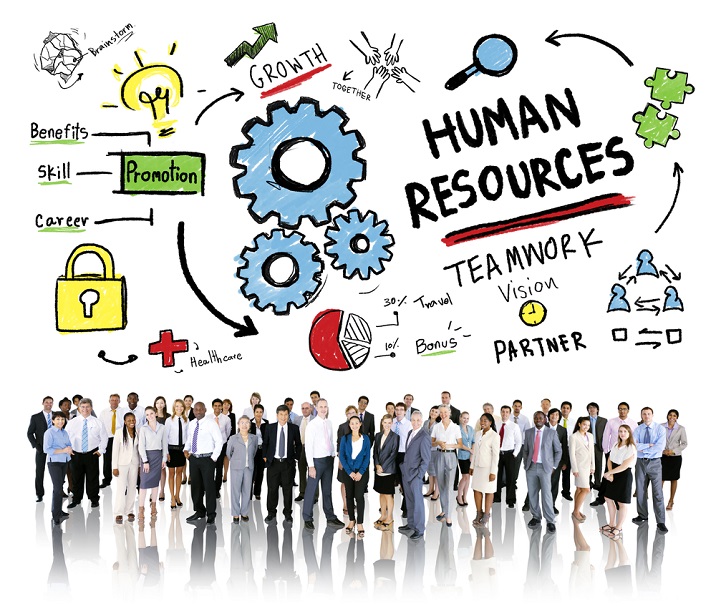
HRM also includes employee assessment like performance appraisal, facilitating proper compensation and benefits, encouragement, maintaining proper relations with labor and with trade unions, and taking care of employee safety, welfare and health by complying with labor laws of the state or country concerned.
The Scope of HRM
The scope of HRM is very wide. It consists of all the functions that come under the banner of human resource management. The different functions are as follows −
Human Resources Planning
It is the process by which a company identifies how many positions are vacant and whether the company has excess staff or shortage of staff and subsequently deals with this need of excess or shortage.
Job Analysis Design
Job analysis can be defined as the process of noticing and regulating in detail the particular job duties and requirements and the relative importance of these duties for a given job.
Job analysis design is a process of designing jobs where evaluations are made regarding the data collected on a job. It gives an elaborate description about each and every job in the company.
Recruitment and Selection
With respect to the information collected from job analysis, the company prepares advertisements and publishes them on various social media platforms. This is known as recruitment.
A number of applications are received after the advertisement is presented, interviews are conducted and the deserving employees are selected. Thus, recruitment and selection is yet another essential area of HRM.
Orientation and Induction
After the employees are selected, an induction or orientation program is organized. The employees are updated about the background of the company as well as culture, values, and work ethics of the company and they are also introduced to the other employees.
Training and Development
Employees have to undergo a training program, which assists them to put up a better performance on the job. Sometimes, training is also conducted for currently working experienced staff so as to help them improve their skills further. This is known as refresher training.
Performance Appraisal
After the employees have put in around 1 year of service, performance appraisal is organized in order to check their performance. On the basis of these appraisals, future promotions, incentives, and increments in salary are decided.
Compensation Planning and Remuneration
Under compensation planning and remuneration, various rules and regulations regarding compensation and related aspects are taken care of. It is the duty of the HR department to look into remuneration and compensation planning.
Features of HRM
Human Resource Management as a discipline includes the following features −
It is pervasive in nature, as it is present in all industries.
It focuses on outcomes and not on rules.
It helps employees develop and groom their potential completely.
It motivates employees to give their best to the company.
It is all about people at work, as individuals as well as in groups.
It tries to put people on assigned tasks in order to have good production or results.
It helps a company achieve its goals in the future by facilitating work for competent and well-motivated employees.
It approaches to build and maintain cordial relationship among people working at various levels in the company.
Basically, we can say that HRM is a multi-disciplinary activity, utilizing knowledge and inputs drawn from psychology, economics, etc.
HRM - HR and Business Strategy
Human Resource Management is a process of bringing people and organizations together so that the goals and objectives of each are achieved. In this chapter, we will discuss how important it is to ensure that the HR functions are properly aligned with the overall business strategy of an organization.
Integrating HR Strategy with Business Strategy
Today, human resource departments have a more precise, strategic role in companies, and an HR strategy affects the bottom line. Let us look into HR as part of a complete business strategy.
HR Strategy as Business Strategy
In real world, no margin in the sand is drawn between human resources strategy and business strategy. A successful business owner understands the strong connection between the two. Progressing human capital is essential to the longevity and success of a business.
Human resources strategy today includes executive leadership teams conferring with human resources experts to improvise complementary goals for human resources and the complete business.
HR Strategy and Business Productivity
The recruitment and selection process in human resources department is paramount to creating a productive workforce. Maintaining a workforce where employees enjoy high levels of job satisfaction and job security converts into a workforce that assists in achieving business goals.
Trends Affecting HR and Business Strategy
Presently, we can say that HR technologies have become an integrated engine in advancing the broader needs of businesses, supporting far more than the basic transactions, and advancing HR and business agenda for future.
Human resources information system (HRIS) is integral to the progress of performance management, recruitment, selection. It also plays a vital role in the rejection of candidates, their promotions and postings, etc.

Interaction among Executive Leadership
The best way to cultivate a relationship between HR and C-level executives is by demonstrating the return on investment (ROI) in human resources activities and practices. This may include explaining the link between reduction in employee turnover and improvement in job satisfaction that improves the bottom line.
Example
Till now, we are very clear about integration of HR strategy with business strategy, business productivity, their interdependencies and the way their relationship influences the organization as a whole.
Let us now take an example to understand the concepts better.
Company X functions from the northeast corner of India. Its functions are limited to the local area only and they have projected their income and gains on that basis.
Due to the prevailing restrictions in the area, the Company has to hire its staff from the local population, who are not professionally qualified. However, the Company ropes in the services of a professionally qualified experienced CEO, who is a techno-commercial man and has the duty to manage the organization centrally.
The CEO interacts with almost all the staff and arranges for on the job training for them. As the employees are not professionally qualified, there is little fear that they will change the job after getting trained.
In this case, lack of local competition goes in the Company's favor. The Company however ensures that it recruits hard working, focused and committed personnel. The salary policy of the Company is such that each candidate is able to earn enough to meet the basic needs.
HRM - Planning
Human Resource Planning (HRP) is the process of foreseeing the requirement of human resources in an organization. The objective is also to determine how the existing human resources best fit in their jobs.
Thus, it focuses on the basic economics concept of demand and supply in the context of the human resource capacity of an organization.
Components of HRP
The following are the components of human resource planning −
Current HR Supply
It involves a comprehensive study of human resource strength in the organization with respect to the numbers, skills, talents, competencies, qualifications, experiences, age, tenures, performance ratings, designations, grades, compensations, benefits, etc.
At this stage, the consultants may organize extensive interviews with the managers to understand the critical HR issues they face and basic workforce abilities as crucial for various business processes.
Future HR Demand
All the known HR variables like attrition, lay-offs, foreseeable vacancies, retirements, promotions, pre-set transfers, etc. are considered while selecting future HR demand. Further, specific unknown workforce temporaries like competitive factors, resignations, abrupt transfers or dismissals are also involved in the scope of analysis.
Demand Forecast
It is important to understand the business strategy and the objectives of the organization in the long run so that the workforce demand forecast is aligned to the organizational goals.
HR Sourcing Strategy and Implementation
Sourcing strategy and implementation may involve conducting interaction programs with employees, relocation, talent acquisition, recruitment and outsourcing, talent management, training and coaching, and revision of policies. The plans are then executed taking into confidence the mangers so as to make the process of execution smooth and efficient.
Even though HR Planning sounds quite simple as a process of managing the numbers in terms of human resource needs of the company, the actual exercise may include the HR manager to face many roadblocks owing to the effect of the current workforce in the company, pressure to meet the business objectives and prevailing workforce market condition.
Thus, a properly conducted process of HR Planning by an HR Consulting company helps the company in meeting its aims and objectives in a timely manner with the right HR strength in action.
Job Analysis
It is the process of identifying and choosing elaborated contents of a particular job, thus clearly defining duties, rules, responsibilities, accountabilities, and skills related to the job.
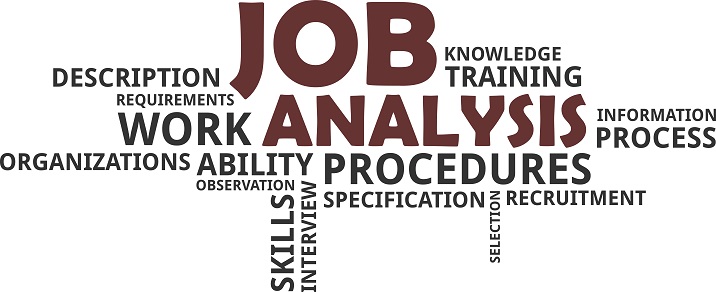
Job analysis is the process of analyzing the job what is the demand and requirement for the job, and not of the individual.
The process of job analysis gives two sets of data −
Job description − Job description is a written statement including complete information about what all a job holds, like job title, duties, tasks and responsibilities related to job, working conditions and hazards, reporting relationships, tools, machines and equipment to be used, and relationships with other designations.
Job specification − Job specification includes particulars regarding the capabilities that an individual should possess to perform the assigned tasks efficiently. This includes educational qualification, experience, training, appropriate skills, knowledge, and abilities required to perform the job.
Job Design
Job design is a continuous and ever-evolving process that is targeted at helping employees in making adjustments with the changes at the workplace. The end goal is minimizing dissatisfaction and enhancing motivation and employee engagement at the workplace.
There are various steps involved in job designing, but all these steps follow a logical sequence. Every step has its own importance and no step can be neglected during the designing process. The sequence is given below −
- What jobs are to be done or what jobs are a part of the job?
- How are the jobs performed?
- What amount of jobs is required to be done?
- What is the procedure of performing these tasks?
All these questions are considered while arriving upon a clear definition of a specific job, thereby making it less risky for the one performing the same. A well-defined job creates a feeling of achievement and a sense of high self-esteem among the employees.
Job Evaluation
In contrast to job specification, job evaluation specifies the relative value or worth of each job in a company by examining the task and ranking the jobs accordingly.
Job evaluation cab be done by any of the following methods −
Points rating − Different levels are allotted to the various elements of jobs and then the points allocated to different levels are summarized to get the point score of the jobs. It forms the basis of pay structure.
Factor comparison − A comparison of different independent factors of jobs is done and points are given to each factor scale of individual job. These points are then aggregated to rank the jobs.
Job ranking − A job is not broken into factors or elements; instead, it is evaluated as a complete process and is compared with other jobs. After proper evaluation, jobs are scaled accordingly.
Paired comparison − Jobs are compared with each other and points are allocated depending on being higher, lesser or equal. These points are added to prioritize the order of jobs. The jobs with higher priorities are given more attention as compared to others.
HRM - Talent Management
Talent management indicates the skills of attracting highly skilled workers, integrating new workers, and improving and retaining current workers to meet the current and future business objectives.

Companies involved in a talent management strategy shift the duties of employees from the human resources department to all managers throughout the company. It is also called Human Capital Management (HCM).
Talent management is basically concerned with coordinating, collaborating and managing the different talents people have to offer within a company. This is done by studying and examining each individual on the basis of their skills, talent, personality and character in relation to filling a particular vacancy within the company.
Every individual has different skills to offer and the difficult part for a company is choosing those individuals who fit in with the existing company culture. Effective HR procedures will be able to identify these individuals and appoint them appropriately.
Functions of Talent Management
After gathering all the skilled people required for the job, we need to handle them. This is not possible without specifying the operations that need to be undertaken in talent management. Various functions that organizations should perform with the help of HRM and other departments are given below −
- Talent requirement analysis
- Allocating the talent resources or sources
- Influencing talents towards the organization
- Recruiting or nominating the in house or outsourced talents
- Managing combative salaries or professional fees
- Training and progress of talent pool
- Performance examination of talent
- Career and prosperity planning
- Withholding management
We can conclude that talent management or human capital management is a set of business practices that manages the planning, acquisition, development, retention and growth of talent in order to achieve business goals with optimized performance.
Advantages of Effective Talent Management
If talent management is done properly, it would lead the organization prosper wonderfully, as all the employees in the firm would be masters in their own department and will give their best to achieve the goals and objectives of the company. That way, the competency gap between necessary competencies by the industry and available competencies minimizes significantly.
The main advantages of effective talent management are −
- Continuously grooms the organization's effectiveness and efficiency.
- Helps in achieving the targeted business goals with superior performance.
- Improves organization's overall culture and work climate.
- Provides people with high level of satisfaction with their jobs.
- Improves withholding of talent and reduces people turnover.
- Manages better overall growth of people associated with the organization.

It is essential that the right candidates having the required skillset are recruited in order to make use of their skills and utilize them for the development of both the individual as well as the company. This is possible only with the help of talent management.
HRM - Training and Development
Training can be defined as a refining process done with the selected candidates to make them perfect and adaptable according to the changing working environment of the company.
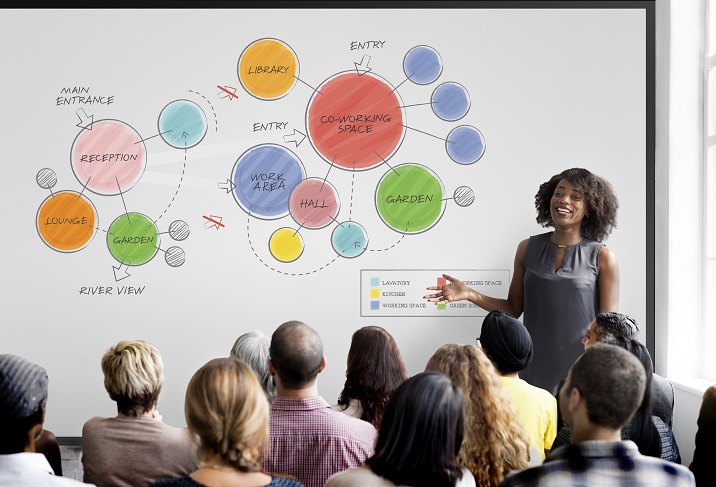
The complete process of identifying, selecting, recruiting and training individuals helps them in their overall professional growth and also contributes to the development of the company.
Career Development
Career Development is the process by which employees improve through a series of stages, each associated with a different set of development tasks, activities and relationship.
It can also be defined as an ongoing formalized effort by an organization that aims at developing and enriching the organizations human resources in the light of both the employee and the organizations need.
The Need for Career Development
From a companys perspective, the failure to encourage employees to please their careers can result in a shortage of employees to fill open positions, lower employee commitment, and inappropriate use of money allocated for training and development program.
When a company helps employees in developing a career plan, the employees are less inclined to quit that company. Developing a career can boost the morale of the employee, enhance productivity and help the company become more efficient.

Career Development-Objectives
Career development has three major objectives −
To meet the immediate and future human resource requirements of the company on a timely basis.
To better update the company and the individual about potential career path within the company.
To utilize existing human resource programs to the fullest by integrating activities and practices that select, assign, develop, and manage individual careers in alignment with the companys plan.
Probably, the most important objective of any career development program is to facilitate the tools and techniques that will enable employees to gauge their potential for success in a career path.
Career development is also essential because career development can minimize unemployment and provide opportunity on the basis of performance & qualification. It tries to improve the overall personality of an individual solely as well as when in group.
HRM & Career Development Responsibilities
Career Development has its duties distributed at various levels and each level is answerable for their share of responsibilities. We have responsibilities assigned to the organization, employees as well as mangers.
Career development plays a crucial role in grooming an individual, group as well as the organization as a whole.
Organizations Responsibilities
Organizations responsibilities include instigation and ensuring in the first place that career development does take place. Specifically, organizations responsibilities are to enhance career opportunities and improve interaction between employees.
The organization should promote the conditions and create a surrounding that will facilitate the development of individual career plans by the employees. Basically, the organization provides information regarding the mission and policies and helps employee prepare their career development plan and career path.
Employees Responsibilities
The only person who really knows what she or he needs is the individual and these desires differ from person to person. The duty of an employee varies with his/her designation.
While the individual is ultimately answerable for preparing his or her individual career plan, experience has shown that people make considerable progress only when they receive some motivation and direction.
Managers Responsibilities
The manager should act as a catalyst and sounding board. The manager should show an employee how to go about a process and then help the employee understand what is required of him in the position.
The immediate manager facilitates guidance and encouragement. The manager typically verifies the employees readiness for job mobility. Moreover, managers are often the primary source of information about position openings, training courses, and other development options.
These are the major career development responsibilities an HRM needs to take care of in an organization.
Career Development Process
Career planning entails an individual and organizational requirements and options that can be matched in a variety of ways. Thus, career planning is the process through which employees −
- Become aware of their interests, values, strengths and weakness.
- Collect information about job options within the company.
- Identify and choose career goals.
- Establish action plans to achieve those specific career goals and objectives.
Career development process may sound like just the qualifications that an individual gets throughout his/her educational field, but here we have unfolded a new side of it, as we see how an individuals career gets affected by the place where he/she works.
Career Planning System
Career planning system can be defined as a step by step process of improving as an individual; we can also call it as a process of self-development.
This system consists of the following four different stages −
Evaluation Process
The evaluation phase includes activities like self-assessment and assessment by the company. The objective of having evaluation is to understand the employees strengths and weaknesses.
Self-Assessment
Self-assessment assists employees in determining their career interest, values, aptitudes and behavioral tendencies. In order to do self-assessment, employees often take psychological tests and conduct self-directed searches.
Large amount of self-assessment materials is available over the internet and other commercial outlets. Tests also assist employees identify the relative value they place on work and leisure activities.
Career counselors are often used to help employees in the self-assessment process and translate the results of psychological tests into measurable goals and activities.
Assessment by the Organization
Organizations have several potential sources of information that also help for assessing employees. One of the most frequently used sources has been the performance appraisal process.
Direction Phase
The direction phase includes determining the career desired by the employee. What exactly interests the employee? How can we match the employees interest with the desirable job in the organization?
Thus, the steps that should be taken in order to realize their career objectives are −
- Evaluation Process
- Direction Phase
- Goal setting
- Action Planning
The description given above says it all about career planning system. As we can see, not a single stage can be avoided, as all are interlinked and are crucial to career development.
As we end this chapter, we know what exactly career development is, why HRM needs to deal with career development management, and how it is important individually as well as for a team.
HRM - Performance Management
Managing employee performance is one of the key elements for organizational success in the present context of firms. As we know, all the firms are busy trying to adapt to a resource centered view.
As we have been mentioning throughout, firms in the service sector that lay a lot of emphasis on people need to consider that employee performance is managed in a holistic manner.

Effective Performance Management and Appraisal
Let us take a look at the effectiveness of performance management and appraisal with the following points −
A Two-Way Street
Talking about employee performance, we need to remember that it is a two-way process that ties the manager and the employee with the HR manager playing the role of a mediator.
For instance, any conversation about employee performance has to include the manager and the employee or the manager and the managed. Thus, it is imperative that both parties to this transaction understand their responsibilities and work together to ensure that the process is smoothened.
The Role of the Manager
The manager has a duty to make sure that his or her management of the employees is free of biases and prejudices. Across companies and verticals where the employees feel discriminated against, it has led to attrition, lower employee morale and in the extreme cases, lawsuits against the company.
Thus, the manager has to walk the talk and not just pay lip service to the companys policies on employee performance. During the course of working together as a team, there are bound to be instances where conversation between the manager and the team and within the team manifests itself.
It is incumbent upon the manager to make sure that such instances do not morph into a corrosive effect that threatens the very existence of the team as well as degrades the performance of the team as a whole.
The Role of the Employee
Just as the manager has a responsibility to manage the team effectively, so does the employees have corresponding responsibilities.
Absenteeism, shirking work, a negative attitude and an indifferent attitude towards work are some things that the employee must avoid. It is better for the employee to know that once he or she is categorized as having an attitude problem, then it would be difficult for the employee to break the perception and perform effectively.
This does not mean that the employee has to accept whatever comes his or her way silently. The point here is that the employee must use the channels available for redressal rather than sulking at work if he or she has grievances about the manager.
Organizational Focus
Though the role of the HR manager and the organization seems to be relatively small, it is a fact that organizational goals and culture play a very important part in ensuring that employee performance is managed for the benefit of the organization.
We have seen the centrality of managing employee performance to the progress of the organization. Here it should be noted that there are fair chances that the centrality leads to degrading the progress, if not properly checked.
If organizations want to minimize attrition and boost sagging employee morale, the first thing they can do is to make sure that the employee performance management system is streamlined.
Performance Appraisal Process
The performance appraisal process, simply put, is that time of the year when the employees are examined on their performance during the last six months or one year depending upon the timeframe that is set for the same.

The performance appraisal process is conducted between the employee and his or her manager for the first round and then between the manager and the managers manager before going into the third round. The third round includes the above people as well as the HR manager but excludes the employee.
Managing employee performance within a larger framework of organizational goals is critical for organizations that count people as their key assets but still, it can be done efficiently as discussed above.
HRM - Employee Engagement
Employee engagement is a workplace approach designed to ensure that employees are committed to their organizations goals, objectives and values, encouraged to contribute to organizational success, and are able at the same time to enhance their own sense of well-being.
Here it is believed that all the three components - attitudes, behaviors and outcomes are a part of the engagement story. There is a virtual ground, when the pre-conditions of engagement are met. These three aspects of engagement trigger and reinforce one another.
Involved organizations have strong and authentic values, with clear evidence of trust and fairness based on mutual understanding, where two way promises and commitments between employers and staff are understood and are achieved.
Despite there being some debate about the precise definition of employee engagement, there are three things we know about it −
- It is measurable.
- It can be correlated with performance.
- It varies from poor to great.
Most importantly, employers can have a great impact on peoples level of engagement through appreciation, healthy interactions, brainstorming, group discussions, common games etc. That is what makes employee engagement so essential as a tool for business success.
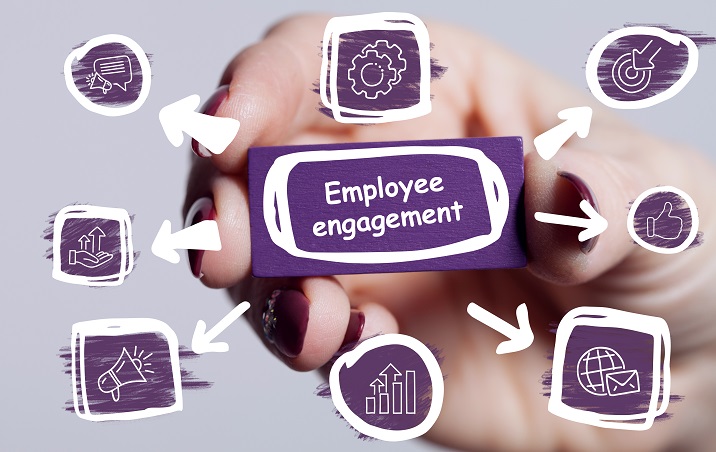
Rules of Employee Engagement
Every HR is bound to follow a set of rules in order to maintain the ethics and justify the role of HR. The following rules must be followed to engage the employees in an organization.
Don't Sweat Over Reviews
Dont judge people on the basis of what others say about them. Instead, judge a person on his/her abilities and performance.
Discover Your Company's Purpose
Invent the purpose or object of the company, discover the new objectives or target points that can be set for the company.
Survey, But Keep It Short and Follow Up
When asked about an update, try to keep it to the point and short; be specific. There is no point in explaining unnecessary details, which are not relevant to the topic.
There Is Only So Much You Can Do
Give yourself a break. Dont try to complete all the work at the same time; analyze your potential and work accordingly.
Don't Worry About Engagement
Dont worry about always fitting into the group; show what you are. Rules are fine, but simply having actual conversations and asking employees what we can do better is much more valuable.
If employees can't sit down with their boss and talk about things, then it can be detrimental for the company in the long run doesn't matter how many stringent rules are put in place.
HRM - Employee Performance
Businesses would do well if they continuously groom their employees. This would pave way for improved performance. Not only does it help businesses to meet their goals and objectives, it can also keep employees meet the challenges and remain loyal to their organizations.
Techniques focus on individual employees as well as the overall staff. Employers might want to equally help someone doing brilliant work as well as the one with no potential to develop.
Therefore, saving on recruiting costs, a staff who already does great work might require a boost to qualify for the next promotion or receive some additional bonus in the salary.
Employee Performance Reviews
One of the frequently used tools to develop employee performance is the annual performance review. Companies dont necessarily follow a fixed format for accessing employee performance. Individual businesses require choosing if a particular employees skills and competencies will lead to success.

Typically, an employee answers questions about his/her skills, abilities, potential and competencies on a form and his boss also responds to those questions. Then they meet to discuss the employees work.
Topics of evaluation must address what the employee is expected to complete.
Performance areas to develop should be discussed.
It should be checked if the employee was given the tools necessary to complete his tasks.
An assessment should be made as to what the employee has not completed but was expected and why.
Performance reviews have a lot of impact due to salary increases and bonuses are frequently dependent upon their results. Employees should be consistently encouraged by a boss with verbal praise for a job well done.
Coaching
One of the ways to improve an employees performance is through coaching. Coaching can be defined as a nonjudgmental and interactive process that helps the manager and employee create a performance plan focused on one or two performance areas.

During a typical work day, the coach asks questions and listens to the employee, facilitating feedback and support on the basis of his performance as required. We can say that coaching highlights growth and development.
A coach helps average performers perform better by determining their potential and understanding why they aren't achieving more, creating a plan to reach their potential and reinforcing their strengths.
Working on Low Morale
Some employees suffer from lack of morale or low morale. Leaders can help unsatisfied, poor performers with low morale become more disciplined, satisfied and willing to perform assigned tasks without a threat of job loss.
Leaders can improve employees morale by being clear about what they want to say, holding active interactive sessions, inviting group discussions, being mindful of how they reward employees, and boosting employees through modeling.
A leaders behavior helps others see the importance of their work, especially if leaders consider themselves part of the company team and work with employees to set company goals, instead of being strictly task masters.
The leader must also build a sense of we with employees so that they get a feeling of loyalty and belongingness towards the company and contribute to company goal-setting, objectives and resolution of disputes.
HRM - Compensation Management
Let's start our discussion of Compensation Management with a simple question: "What is compensation?" In very simple terms, compensation is the results or rewards that the employees receive in return for their work.
Compensation includes payments like bonuses, profit sharing, overtime pay, recognition rewards and sales commission, etc.
Compensation can also include non-monetary perks like a company-paid car, company-paid housing and stock opportunities. Compensation is a vital part of human resource management, which helps in encouraging the employees and improving organizational effectiveness.
From a manager's point of view, the compensation package offered to a company's employees is essential not only because it costs money, but because it is likely to be the primary reason the employees work for the firm.
Compensation packages with good pay and advantages can help attract and retain the best employees. A quick survey of employees about compensation is likely to expose an expectation that wages are fair and cover basic living expenses, keep up with inflation, leave some money for savings (perhaps for retirement) and leisure, increment over time.
A company's compensation scheme also informs a great deal about the firm's values and cultures. Employees often look at what a company pays rather than what it says. In many aspects, people behave as they are rewarded.
A compensation scheme projects what the company expects of its employees. For example, if quality is an essential value, then it should be implemented through some element of the total compensation system.
Objectives of Compensation Policy
The objectives of compensation policy are as follows −
Allure suitable staff.
Keep qualified personnel.
Develop reward structures that are equitable with logical and fair pay relationships between differently valued jobs.
Manage pay structures to mirror inflationary effects.
Assure that rewards and salary costs handle changes in market rates or organizational change.
Appraise performance, duty, and loyalty, and provide for progression.
Abide with legal requirements.
Maintain compensation levels and differentials under review and control salary or wage costs.
Clearly, managing a firm's compensation policy is a complex task as it facilitates systematically administered and equitable salaries, reconciles employees' career aspirations with respect to earnings, aligns employees' personal objectives with those of the organization, and keeps the firm's costs under control.
To summarize, compensation management is a synchronized practice that includes balancing the work-employee relation by facilitating monetary and non-monetary benefits for employees.

Importance of Compensation Management
A good compensation is a must for every business organization, as it gives an employee a reason to stick to the company.
An organization gains from a structured compensation management in the following ways −
It tries to give proper refund to the employees for their contributions to the organization.
It discovers a positive control on the efficiency of employees and motivates them to perform better and achieve the specific standards.
It creates a base for happiness and satisfaction of the workforce that limits the labor turnover and confers a stable organization.
It enhances the job evaluation process, which in return helps in setting up more realistic and achievable standards.
It is designed to abide with the various labor acts and thus does not result in conflicts between the employee union and the management. This creates a peaceful relationship between the employer and the employees.
It excites an environment of morale, efficiency and cooperation among the workers and ensures satisfaction to the workers.
In short, we can say that compensation management is required as it encourages the employees to perform better and show their excellence as well as provides growth and development options to the deserving employees.
Types of Compensations
We have learnt about what compensation and its importance is. However, when it comes to an organization, be it private or public, compensations are further divided into the following −
Direct Compensation
It is naturally made up of salary payments and health benefits. The creation of salary ranges and pay scales for different positions within an organization are the central responsibility of compensation management staff.
Direct compensation that is in line with the industry standards facilitates employees with the assurance that they are getting paid fairly. This helps the employer not to worry about the costly loss of trained staff to a competitor.
Indirect Compensation
It focuses on the personal encouragements of each individual to work. Although salary is essential, people are most productive in jobs where they share the company's values and priorities.
These benefits can include things like free staff development courses, subsidized day care, the chances for promotion or transfer within the company, public recognition, the ability to effect change or bring some changes in the workplace, and service to others.
These are the two types of compensation that need to be managed and have its own contribution in the development of the organization. Moving forward, we will see the different components of compensation.
Components of Compensation
Compensation as a whole is made up of different components that work as an aid for an employee after retirement or in case of some accident or injury. Now we shall see the key elements or components that make compensation.
Wages and Salary
Wages mark hourly rates of pay, and salary marks the monthly rate of pay of an employee. It is irrelevant of the number of hours put in by an employee working in the firm. These are subject to annual increase.
Allowances
Allowances can be defined as the amount of something that is allowed, especially within a set of rules and regulations or for a specified purpose. Various allowances are paid in addition to basic pay.
Some of these allowances are as follows −
Dearness Allowance − This allowance is given to protect real income of an employee against price rise. Dearness allowance (DA) is paid as a percentage of basic pay.
House Rent Allowance − Companies who do not provide living accommodation to their employees pay house rent allowance (HRA) to employees. This allowance is calculated as a percentage of salary.
City Compensatory Allowance − This allowance is paid basically to employees in metros and other big cities where cost of living is comparatively more. City compensatory allowance (CCA) is normally a fixed amount per month, like 30 per cent of basic pay in case of government employees.
Transport Allowance/Conveyance Allowance − Some companies pay transport allowance (TA) that accommodates travel from the employees house to the office. A fixed amount is paid every month to cover a part of traveling expenses.
Incentives and Performance Based Pay
Incentive compensation is performance-related remuneration paid with a view to encourage employees to work hard and do better.
Both individual incentives and group incentives are applicable in most cases. Bonus, gain-sharing, commissions on sales are some examples of incentive compensation.
Fringe Benefits/Perquisites
Fringe benefits include employee benefits like medical care, hospitalization, accident relief, health and group insurance, canteen, uniform, recreation and the likes.
In recent years, a great deal of attention has been directed to the development of compensation systems that go beyond just money. We can say that all the components of compensation management play a very important role in the life of an employee.
In particular, there has been a marked increase in the use of pay-for-performance (PrP) for management and professional employees, especially for executive management and senior managers. Compensation is a primary motivation for most employees.
HRM - Rewards and Recognition
Employee rewards and recognition system is not just a positive action towards employees. If it is implemented effectively, it proves to be an efficient tool in encouraging the employees to create and bring business for the company.

Recognizing the efforts of employees and encouraging their morale results in increased productivity and decreased attrition rate. It is a documented fact that an encouraged and dedicated workforce can change the fate of a company.
Establishing and executing a reward system needs careful analysis of the company policies and procedures. Deciding how to recognize employees efforts and what to provide them needs thorough analysis of duties and risks involved in a particular job.
Types of Rewards
Reward system of a company should also be in alignment with its goals, objectives, mission and vision. On the basis of the job profile, both monetary and non-monetary rewards can motivate employees to contribute more to the organization.
Monetary Rewards
A hike in salary, incentives, movie tickets, vacation trips, monetary allowances on special occasions, redeemable coupons, cash bonuses, gift certificates, stock awards, free or discounted health check-ups for the complete family and school/tuition fees for employees children come under this category.
Non-monetary Rewards
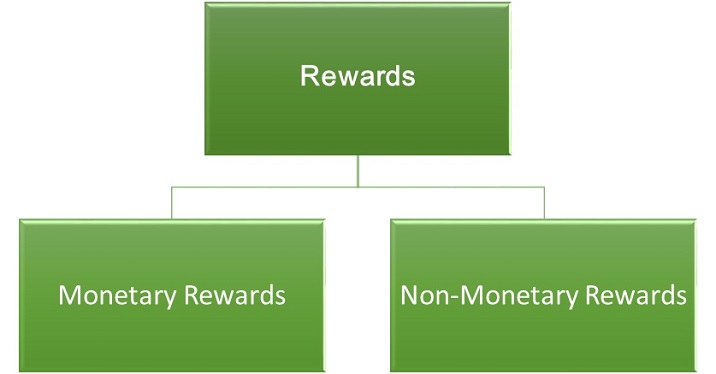
Non-monetary rewards include awards, certificates, letters of appreciation, dinner with boss, redecoration of employee cabin, membership of recreation clubs, perks, use of company facilities, suggestion awards, tie-pins, brooches, diaries, promotion, a say in management, etc.
A mixture of monetary and non-monetary rewards works wonders and drive employees to act competently continuously. A proper and efficient employee reward and recognition program creates harmonious relationships between employees and the employer.
Flexible Pay
The practice of relating pay to performance has been around for a while. However, whats new is that the percentage of pay that is related to performance and the way in which the same is structured around different elements of performance.
One of the key elements of this flexible pay plan is the strategy of relating pay to performance. This strategy has been followed by many multinational companies worldwide and consists of the overall pay structure being broken down into elements.
The variable pay would be paid out as a percentage of the complete package, subject to the performance of the employee. For instance, if the employee gets a grade of 3 on a scale of 1 to 5 (with 1 as the highest and 5 and the lowest grade), the variable pay would be 60-70% of the eligible amount and if the employee gets a grade of 2, the variable pay would be 110-120% of the eligible amount. The variable component of the salary is determined according to the performance of the employee.
The international practice is to increase the element of the variable pay more than the hierarchy. This would state that at senior levels of the employee hierarchy, the variable component can be as high as 50-60% of the overall pay.
HRM - Organizational Culture
Human resources do have a challenging role to play in organizational culture, as it is the employees who work for the organization, who embrace and improve a particular culture within the organization. Any desired change to the culture of the organization has to be done through the employees and by the employees.
Organizational Culture and HR Practices
Basic HRM exercises like recruitment, selection, and training affect the performance and stability of an organization. These exercises have the ability to influence employee behavior and build values that develop the organizational culture.
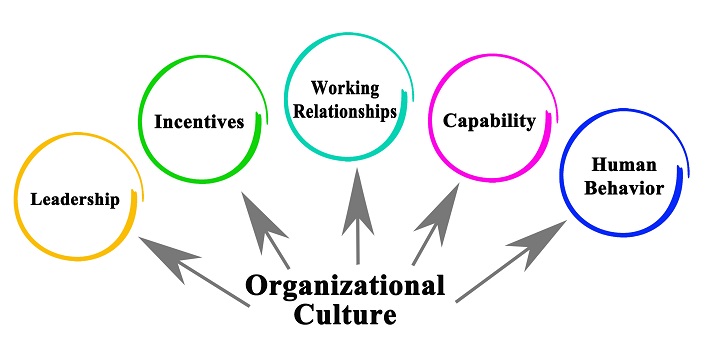
Change in behavior defines how one acts or conducts oneself in any situation. Therefore, if HR exercises could positively affect the behavior, improving positive thinking about organizational initiatives towards the employees, it would lead to positive results for the business. Cultural values are part of the external factors that influence HR exercises. Cultural values command employee behavior.
In organizational cultures where employee engagement is common, it is more likely to have higher employee satisfaction and encouragement than the ones that do not favor employee involvement.
Anyhow, there might be various reasons why employees do not want to or speak out. Some employees might see this as an unnecessary risk, while others might simply have personal reasons like being shy or not being comfortable with the management.
Management Styles
An organization experiences different management styles that may change or remain steady with time.
There are different management styles that we come across while observing the management patterns of different private and public sector companies.
Let us take a look at the following management styles −
Collegial Style
In the collegial style, resources and rewards are uniformly distributed. The management control over the employees is restricted, resulting into employee empowerment. Individual duty is the basis of organizational performance.
Organizational success depends on the commitment that an employee has towards the work and the business. This key element and distributed values help create a unity of direction and focus on the part of the employees.
Meritocratic Style
In the meritocratic style, employees are bothered about productivity and cohesion. The management puts stress on performance. In short, this management style believes in the fact that power should be distributed on the merit basis.
Appointments are made and duties are assigned to individuals on the basis of their "merits", namely intelligence, credentials, and education, which are determined through evaluations or examinations, for example, Civil Service Exams.
Elite Style
In the elite management style, the organizational hierarchy is highly improvised. Power, resources, and rewards are focused at the top levels of the hierarchy. Employees have no say in the decisions made by the senior management.
Leadership Style
The leadership style of management has a lot in common with the elite style of management, but rather than a faction of leaders at the top level, it has leaders at different levels of the hierarchy. For example: the army.
In the next chapter, we will throw some light on how to manage diversity in workplace efficiently.
HRM - Workplace Diversity
When an organization has employees of different ethnicities and a large proportion of women than the industry average, naturally the question arises as to how to combine the differences between these employees without causing too much friction in daily interactions.

Managing diversity is essential, as, otherwise, the performance of the organization takes a beating and worse, there can be possible lawsuits and legal tangles from suffered employees who feel aggrieved due to instances of discrimination and harassment based on their ethnicity or gender.
Issues in Managing Diversity
One of the major issues in managing diversity is to deal with the majority and minority perspective. Naturally, there always is a predominant majority of a particular race or ethnicity in an organization and various others are in minority groups.
Considering that the most pressing issue in managing diversity arises out of the treatment of women, the issues of race and gender come across as the unique drivers in managing diversity.
In recent times, these issues have come to the forefront due to higher awareness among the minority groups about their rights as well as disciplined enforcement of laws and regulations that govern workplace behavior.
Thus, it is in the interest of the management of any organization to sensitize their workforce towards race and gender issues and assure that the workplace is free of discrimination against minority groups as well as women.
Gender Sensitization

We have devoted a separate section on gender sensitization because when compared to other issues in managing diversity, this is the most pressing one due to the preponderance of women in the workforce as well as past trends that point to the emergence of this single issue as the dominant one that preoccupies the mind space of managers.
The worrying aspect about this issue is that despite policies, regulations and rules governing gender specific issues in most organizations, there is little evidence to express that they are being followed. Thus, what is needed is a mindset change rather than more policies and this can only be done if the workforce is sensitized to the needs of women.
In fact, the situation in Corporate India or India Inc. has not yet reached the stage where lawsuits are regularly brought against management for discriminatory practices. Nonetheless, the trend in recent years is towards a more vocal disapproval of such exercises from industry leaders and management consultants who repeatedly emphasize the importance of a non-discriminatory workplace.
Therefore, the onus is on the management, senior and middle, to ensure that they follow the norms needed of them. The senior level guides the middle, the middle guides the lower and the lower guides the employees in all practices, including gender sensitization.
HRM - Industrial Relations
Industrial Relations and Human Resource Management (IR&HRM) is a branch of study that is designed to prepare students for careers in the fields of employment relations, human resource management, workplace change, and adult education and training.

The students pursuing International Human Resource Management (IHRM) and HRM are expected to master a variety of relevant papers from Education Studies, Human Resource Management, Labor studies, and Psychology. As far as this chapter is concerned, we will be covering some major labor laws amended in India.
Labour Laws
There is a saying, Avoidance of law is not considered in the court of law. The meaning of the above statement is that everyone should know the law of the residing country. That kind of avoidance of law is not accepted by the court. A person cannot claim out of illiteracy or ignorance that he or she does not know the law.
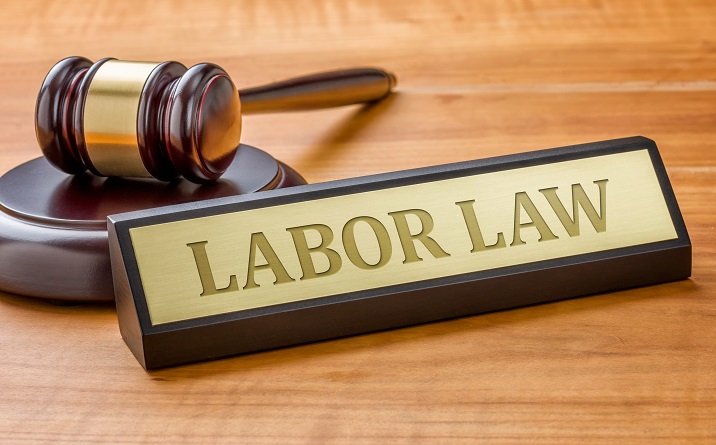
The court needs to take action against any person who breaks the law. Such a person is liable to punishment by the court. Every individual should be aware of law, whether literate or illiterate.
Labor laws act as the backbone of human resource management. It fights for the rights of the employees and the laborers working with the company. Thus, without the engagement of labor law, there is no human resource management.
There is no validity for the human resource management without abiding the labor laws. Sometimes, non-compliance of labor laws may result in serious consequences like penalization or imprisonment or both, based on the gravity of the incident.
Let us discuss a few labor laws that are being followed in India −
Workmen's Compensation Act, 1923
Workers' compensation is a form of insurance facilitating wage replacement and medical benefits to employees injured in the course of employment in return for mandatory relinquishment of the employee's right to sue his or her employer for the sort of avoidance.
General damage for pain and suffering and punitive damage for employer avoidance are basically not available in workers' compensation plans, and avoidance is generally not an issue in the case.
These laws were first executed in Europe and Oceania, with the United States following shortly thereafter.
The Factories Act, 1948
The Factories Act 1948 was passed with the intention of protecting the health of workers. It expands the age limits for the medical examination of individuals entering factory employment, while also involving male workers in the regulations for providing seats and issuing extensive new building regulations.
According to the legislation, young persons under the age of eighteen became subject to medical examination not only on entry to the place of work, but gradually thereafter.
The Payment of Gratuity Act, 1972
It is an Act that ensures a scheme for the payment of gratuity to employees involved in factories, mines, oilfields, plantations, ports, railway companies, shops or other establishments and for matters connected therewith or incidental thereto.
This law is applicable to all establishments employing 10 or more workers. Gratuity is payable to the employee if he or she quits or retires.
The Indian government regulates that this payment be at the rate of 15 days salary of the employee for each year of completion of services, subject to a maximum accumulation of 10,00,000.
The Payment of Wages Act, 1936
The Payment of Wages Act formulates by when wages shall be distributed to employees by the employers.
The law also facilitates the tax withholdings the employer must reduce and pay to the central or state government before distributing the wages.
The Trade Union Act, 1926
This Act formulated the rules and protections granted to Trade Unions in India. This law was modified in 2001.
The Industrial Disputes Act, 1947
The Industrial Disputes Act 1947 formulates how employers may address industrial issues such as lockouts, layoffs, retrenchment etc. It controls the lawful processes for reconciliation and adjudication of labor conflicts.
So, an employee who has worked for 4 years, in addition to several notices and due process, must be paid a minimum of the employee's wage equivalent to 60 days before retrenchment, if the government grants the employer a permission to lay off.
Minimum Wages Act, 1948
The Minimum Wages Act states minimum wages in all industries, and in some cases, those working at home per the timetable of the Act. Central and State Governments can and do crosscheck minimum wages at their discretion.
The minimum wage is further categorized by nature of work, location and numerous other factors at the discretion of the government. The minimum wage scales between Rs.143 andRs.1120 per day for work in the so-called central sphere. State governments have their own minimum wage timetable.
The Payment of Bonus Act, 1965
This Act is applicable to an enterprise employing 20 or more individuals. The Act needs the employer to pay a bonus to individuals on the basis of profits or on the basis of production or productivity.
The Act was modified to require industries to pay a minimum bonus, even if the employer suffers losses during the accounting year. This minimum is currently 8.33 percent of the basic pay.
The Employees' Provident Fund Scheme, 1952
This Act seeks to assure the financial security of the employees in an establishment by facilitating for a system of compulsory savings. The Act provides for constructions of a contributory Provident Fund in which employees' contribution shall be at least equal to the contribution payable by the employer.
Minimum contribution by the employees shall be 10-12% of the total pay. This amount is payable to the employee after retirement and could also be withdrawn partly for certain specified tasks.
The Child Labor (Prohibition & Regulation) Act, 1986
The Child Labor Act, 1986 is one the most regimented acts, as it fights for the rights of children of all sections in India. It dictates where and how children can work and where they cannot.
The provisions of the act are meant to be regulated immediately after the publication of the act, except for part III that discusses the conditions under which a child may work.
Maternity Benefit Act, 1961
The Maternity Benefit Act formulates the employment of the women and maternity advantages mandated by law. It states the various measures and facilities that every private and public sector company is bound to follow for pregnant women.
Any woman employee, who worked in any establishment for an interval of at least 80 days during the 12 months immediately preceding the date of her expected delivery, is bound to receive maternity benefits under the Act.
These are some of the labor laws, which every private company, whether it is a small scale business or a large multinational company, has to abide to respect the law. Anyone found guilty of disobeying the law can be punished by the court.
HRM - Dispute Resolution
Dispute resolution processes are the methods or techniques that a company uses to resolve any dispute that occurs in the company. In this chapter, we will see that the dispute resolution processes are broadly divided into two major types −
Adjudicative processes − Process like litigation or arbitration, in which a judge, jury or arbitrator is involved and determines the result on the basis of facts and proofs presented.
Consensual processes − Process like collaborative law, mediation, conciliation, or negotiation, in which the parties attempt to reach to a settlement through mutual understanding.
Dispute Resolution is an essential requirement in national as well as international HRM. Even in International Trade, the disputes are resolved by negotiation, mediation, arbitration and legal actions.
Dispute Resolution Procedures
As a first step, complainants should try to resolve queries and complaints by contacting their immediate supervisor. This initial contact should be made within ten (10) working days from the occurrence of an issue.
The supervisor, manager or department head should then arrange a meeting with the complainant, and all the concerned parties should make an effort in good faith to resolve the issue. The HRM Generalist will be available to help in these initial efforts to resolve the disputes.
If the dispute cannot be resolved through the efforts mentioned above, the parties may be referred to the HRM Generalist to discuss whether mediation is a correct means for resolving the dispute.

Mediation is a process that helps people resolve conflicts for themselves in a mutually acceptable way in which everyone engaged in the dispute meets with one or more trained mediators. In a private setting, the mediator provides a sequential, simple process for the parties to discuss their dispute along with their feelings, perceptions and needs.
The aim is to begin interaction and move towards resolving the dispute in a manner agreeable to all. If the parties fail to informally resolve the dispute, if they do not wish to pursue mediation or if they are unsuccessful in resolving the conflict through mediation, the HRM Generalist will advise the person raising the conflict as to what other resources are available, if any.
Prohibition of Retaliation − Any attempt to intimidate or retaliate against a person for raising a conflict or participating in dispute resolution under this policy is strictly forbidden. Any individual who makes such an attempt will be subject to disciplinary action, up to and including separation from employment.
HRM - Ethical Issues
Human resources managers strive to hire candidates who fit in with an organization's culture. They must also keep an eye on diversity and equal opportunity as well as both traditional and legal hiring practices.

In short, an organization's culture can be at odds with what's the best thing to do for HR managers. As conflict arises, the HR manager must be adept at resolving conflicts between the demands of company culture and those of ethical behavior.
Major Issues in Ethical Management
Some of the major issues an organization deals with is handling ethical challenges in workforce diversity.
The following are some of the major ethical challenges an organization faces in ethical management −
Harming Some While Benefitting Others
HR managers do much of the screening while the hiring process is still on. By its very nature, screening leaves some people out and permits others to move forward. In short, the ones left out will be affected by not getting the job, no matter how much they need it.
HR managers can neglect the emotionalism of such situations by adhering strictly to the skill sets and other needs of the position, but there will always be a gray area where HR managers may scale how much each applicant wants and needs the job.
Equal Opportunity
The HR managers must regularly monitor the company's hiring practices to make sure there is no discrimination in the hiring process based on ethnicity, sexual orientation, race, religion and disability. However, simply abiding with Equal Employment Opportunity Commission (EEOC) guidelines does not guarantee ethical behavior.
For example, if an HR manager recommends a candidate in order to fill a quota, that decision is unethical, because it will remove other applicants that may be more qualified.
Privacy
Privacy is always a sensitive matter for an HR manager. Though a company culture may be friendly and open and motivates employees to freely discuss personal details and lifestyles, the HR manager has an ethical obligation to keep such matters private. This specifically comes into play when the competing company calls for a reference on an employee. To remain ethical, HR managers must abide with the job-related details and leave out knowledge of an employee's personal life.
Compensation and Skills
HR managers can suggest compensation. While these recommendations may be based on a salary range for each position, ethical dilemmas arise when it comes to compensating employees differently for the same skills.
For example, a highly sought-after executive may be able to negotiate a higher salary than someone who has been with the company for several years. This can become an ethical problem when the lower-paid employee learns of the discrepancy and questions whether it is based on characteristics such as gender and race.
Human resources departments must handle a host of ethical and legal issues from the regulations of the EEOC to the principles and practices of organizations such as the Human Resource Management Institute.
Labor Costs
HR must cope with conflicting needs to keep labor costs as low as possible and to invite fair wages. Ethics come into action when HR must select between outsourcing labor to countries with lower wages and harsh living conditions and paying competitive wages.
While there is nothing illegal about outsourcing labor, this issue has the potential to build a public relations problem if consumers object to using underpaid workers to save money.
Opportunity for New Skills
If the HR department selects who gets training, it can run into ethical issues. As training is a chance for development and broadened opportunities, employees who are left out of training may debate that they are not being given equal opportunities in the workplace.
Fair Hiring and Justified Termination
Hiring and termination decisions must be made without regard to ethnicity, race, gender, sexual preference or religious beliefs. HR must take precautions to eliminate any bias from the hiring and firing process by making sure such actions adhere to strict business criteria.
Fair Working Conditions
Companies are basically expected to provide fair working conditions for their employees in the business environment, but being answerable for employee treatment typically means higher labor costs and resource utilization.
Fair pay and benefits for work are more obvious factors of a fair workplace. Another important factor is provision of a non-discriminatory work environment, which again may have costs engaged for diversity management and training.
By now its pretty clear that while working in an organization, we come across people with different backgrounds, cultural beliefs and we need to respect their beliefs. In case an employee feels left out due to some problem, it may not work in the favor of the organization.
HRM - Audit and Evaluation
Auditing refers to a comprehensive method of objective and systematic evaluation of current practices, documentation and policies &procedures prevalent in the HR system of the company.
An effective HR audit helps in recognizing the need for improvement and enhancement of the HR function. It also guides the company in maintaining compliance with ever-changing rules and regulations.
HR audit thus helps in analyzing the gap between what is the present HR function and what should be or could be the best possible HR function in a company.
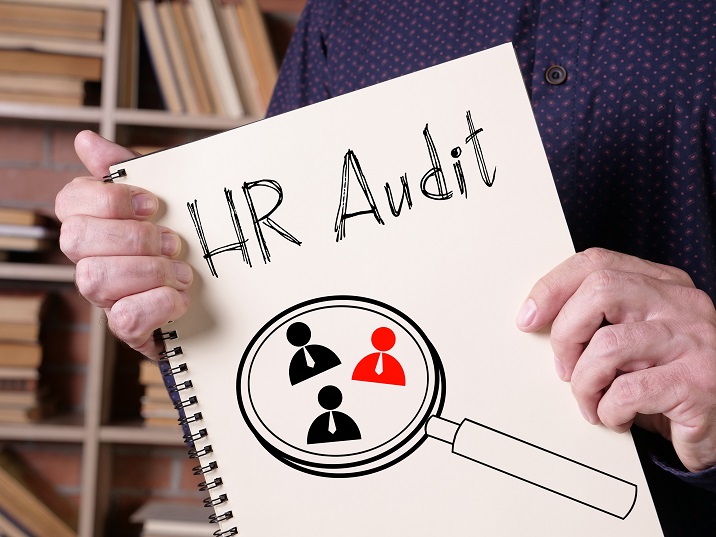
Though HR auditing is not mandatory like financial auditing, companies these days are opting for regular HR audits in order to verify the existing HR system in line with the company policies, strategies, goals &objectives and legal needs.
The entire process of HR auditing is broadly segmented into the following phases −
Pre-audit information − The pre-audit information phase engages a review of the companys policies, HR manuals, employee handbooks, reports, etc., which act as the basis of working in the company.
On-site review − The next phase of on-site review engages questionnaires, interviews, observations, informal discussions, surveys, or a combination of such methods to get the necessary inputs from the members of the company.
Records review − The records review phase needs detailed scanning of present HR records, employees files, employee absenteeism and turnover statistics, notices, compensation claims, performance assessments, etc.
Audit Report − On the basis of this analysis, the final audit report is compiled with appropriate conclusions, summary and recommendations, highlighting the strengths and weaknesses of the HR function along with the necessary developments as needed.
The first three phases include an extensive collection of quantitative as well as qualitative information. The method for collection of information is based upon the size of the target audience, availability of time and type of data to be collected.
The HR audit thus contributes towards the best possible application of internal resources and maximizing the effectiveness of human capital in the company. At the same time, it is useful in streamlining the HR processes and exercises with the company best practices and standards.
HRM - International
International Human Resource Management (IHRM) can be defined as a set of activities targeting human resource management at the international level. It strives to meet organizational objectives and achieve competitive advantage over competitors at national and international level.
IHRM comprises of typical HRM functions such as recruitment, selection, training and development, performance appraisal and dismissal done at the international level and additional exercises such as global skills management, expatriate management and so on.
In short, IHRM is concerned with handling the human resources at Multinational Companies (MNCs) and it includes managing three types of employees −
Home country employees − Employees residing in the home country of the company where the corporate head quarter is situated, for example, an Indian working in India for some company whose headquarters are in India itself.
Host country employees − Employees residing in the nation in which the subsidiary is located, for example, an Indian working as an NRI in some foreign country.
Third country employees − These are the employees who are not from home country or host country but are employed at the additional or corporate headquarters.
For example, an Indian MNC, which has its corporate office in America, may employ a French person as the CEO to the subsidiary. The Frenchman employed is a third country employee.
IHRM vs. HRM
There are many similarities between HRM at the national as well as international level. However, let us have a look at the differences between them with the help of points given below −
Domestic HRM takes place at the national level, that is, within a country and IHRM takes place at the international level, that is, in between two or more than two countries.
Domestic HRM is bothered about managing employees belonging to one nation and IHRM is bothered about managing employees belonging the home country and host country as well as third country employees.
Domestic HRM is concerned with managing limited number of HRM activities at the national level and IHRM is concerned with managing additional activities such as expatriate management.
Domestic HRM is less complicated due to less imprint from the external environment. IHRM is comparatively more complicated, as it is deeply affected by the external factors such as cultural distance and institutional factors.
We can conclude that both IHRM and HRM share some grounds of similarities as well as dissimilarities, but both have their own importance. Further, they contribute to the development of a country in a combined manner.
HRM - eHRM
eHRM can be defined as the planning, implementation and application of information technology for both networking and supporting the HR activities.
eHRM is in essence the devolution of HR operations to management and employees. They access these operations typically through intranet or other web-technology channels.
From this ground, eHRM has expanded to embrace the delivery of virtually all HR policies. Within the system of eHRM, it is possible for margin managers to use desktop computers to organize and conduct appraisals, plan training and development, evaluate labor costs, and examine indicators for turnover and absenteeism.
Employees can also use a system of eHRM to plan their personal improvement, apply for promotion and new jobs, and access a range of information on HR policy. Systems of eHRM are increasingly encouraged by dedicated software produced by private suppliers.
Types & Goals
On the basis of functionalities, we can divide eHRM into three different levels or tiers. In this section, we will be having a brief idea about these three tiers.
Operational eHRM − It is about administrative functions like payroll and employee personal data. All the employee details are stored in the database and regularly updated.
Relational eHRM − It is about supporting business processes. This is done by means of selection, training, recruitment, performance management, career development of the employees and so forth.
Transformational eHRM − It is about strategic HR exercises such as knowledge management and strategic re-orientation. An organization may decide to pursue E-HRM policies from any number of these tiers to meet their HR goals.
eHRM is seen as the potential to develop services to HR department clients (both employees and management), develop efficiency and cost effectiveness within the HR department, and permit HR to become a strategic partner in achieving organizational goals.
In recruiting aspect, we have a number of websites for recruiting of employees in industries. Some of the popular and important web sites in India are listed below.
- naukri.com
- indeedjobalert.com
- jobsahead.com
- monsterindia.com
- careerindia.com
- placementindia.com
- jobsearch.rediff.com
- bestjobsindia.in
- jobzing.com
- cybermediadice.com
- Careerjet.co.in
We have mentioned a few of the examples showing eHRM, but there are lot more we can use. Our ATM transactions, automatic updating system, e-library, e-governance, all come under eHRM. These are some of the examples showing eHRM in India. It is a huge branch of study; in this section, we have just introduced the concept of eHRM.
HRM - Small Scale Units
The economics of small and medium-sized industries is a separate field of research. This section presents an introduction to the features of small and medium-sized industries, which focuses on contextual differences between small and large firms −
Firm Size
The strength of small and medium-sized industries may be defined in various ways. Most definitions depend on statistical criteria. Turnover is sometimes utilized, but the most common criterion is the size of the workforce.
Goals & Strategy
Within micro-economic theory, labor is mostly treated as an input in the production function, and decisions related to the optimal allocation of the production factors are made independent of the utility that employees derive from their work. The aim is usually considered to be profit maximization.
Organizational Culture
The matrix dimension of organizational culture highlights the underlying set of key values, beliefs, understandings and norms distributed within an organizations workforce. These underlying values relate to ethical behavior and commitment to efficiency or to colleagues, customers, sponsors or other stakeholders.
Organizational Technology
Differences in market power, organizational structure and production technologies lead to diseconomies of scale for small firms. The influence of production technologies is however decreasing, as recent developments in ICT technologies have limited the minimum efficient scale of many production technologies, reducing the diseconomies of scale due to production technologies for SMEs.